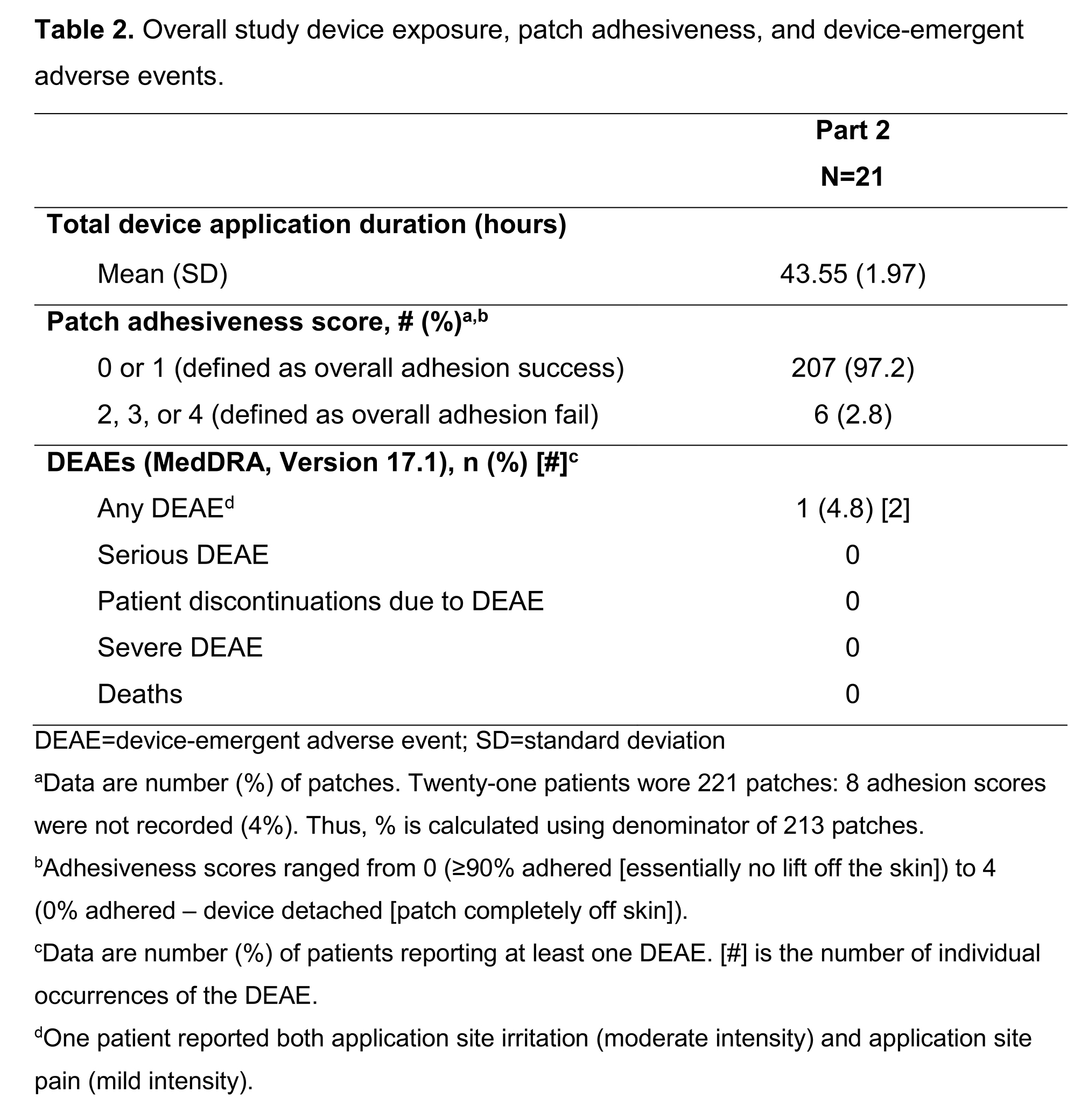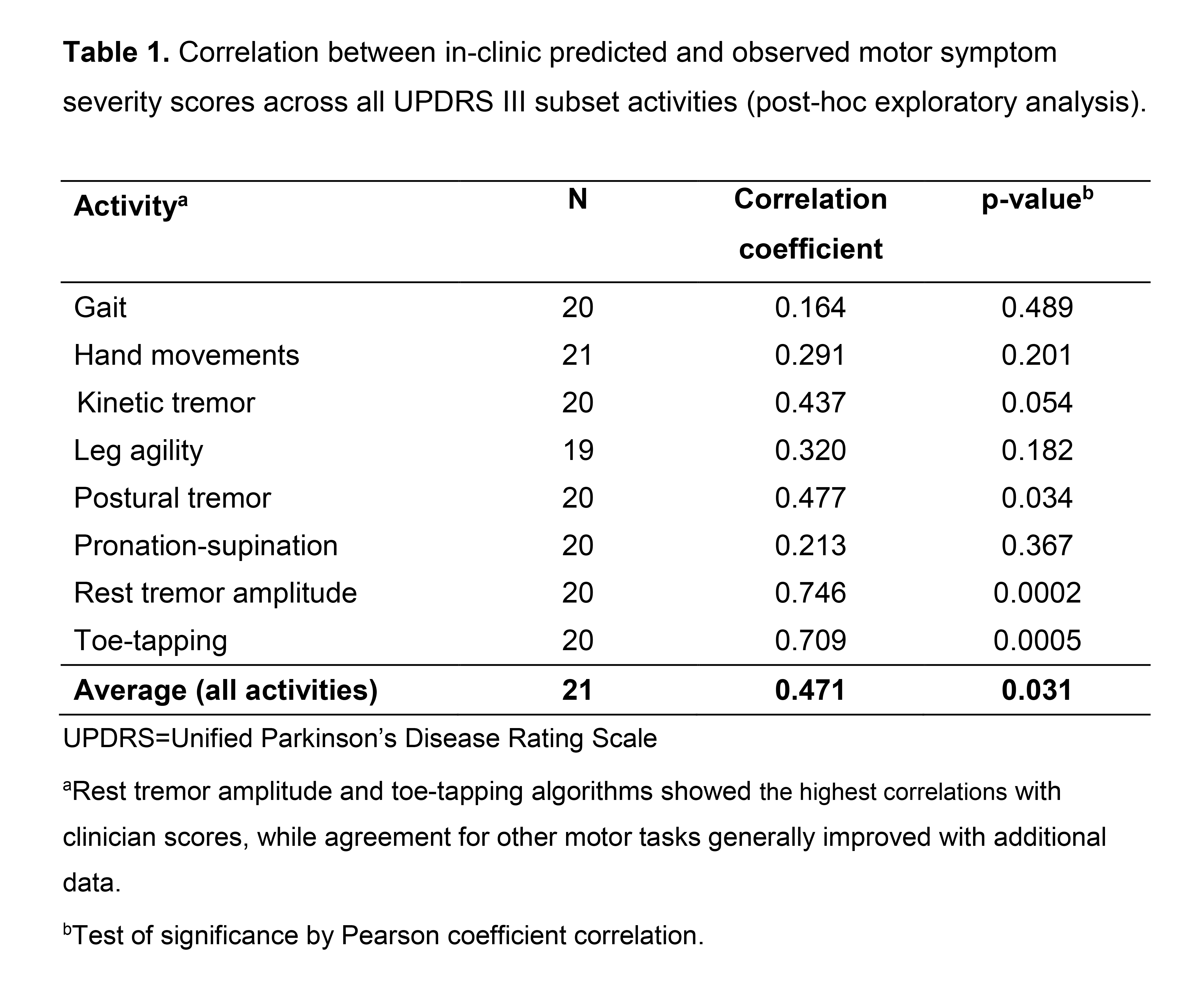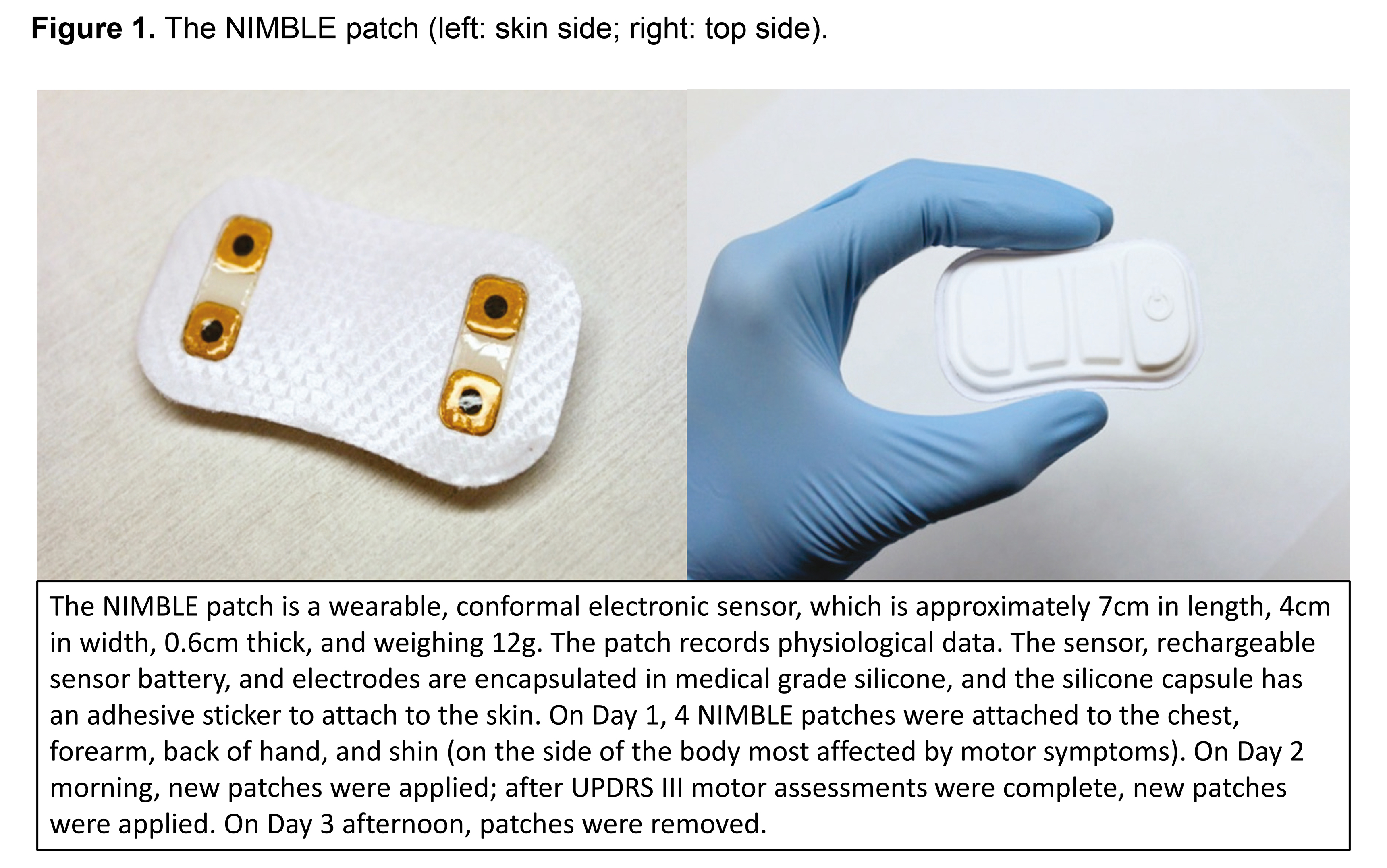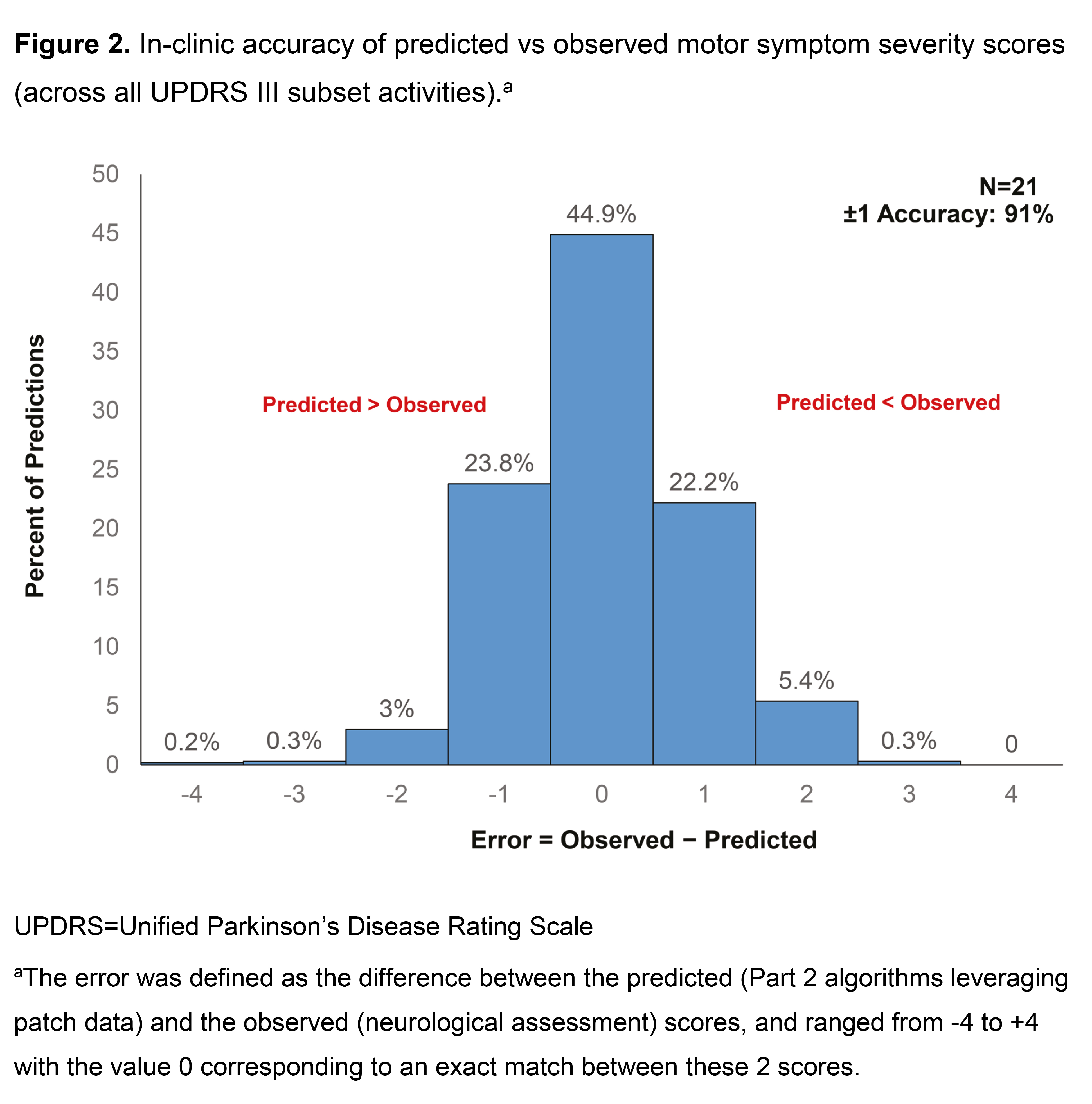Session Information
Date: Tuesday, June 6, 2017
Session Title: Technology
Session Time: 1:45pm-3:15pm
Location: Exhibit Hall C
Objective: 2-part pilot study to evaluate feasibility of a wearable sensor, the prototype NIMBLE system sensor patch, to assess motor symptoms in Parkinson’s disease (PD) patients.
Background: PD motor symptoms are generally assessed using patient diaries and in-clinic evaluations. Tools providing more objective, quantitative and continuous assessment outside the clinic are needed. Part 1 evaluated the feasibility of the NIMBLE patch to accurately capture movement at various body sites during MDS-UPDRS assessment. Part 2 (reported here) explores the feasibility of applying the patch to the most appropriate body sites identified in Part 1 to record motor symptoms in-clinic and at-home.
Methods: Patients had motor fluctuations and were on stable levodopa (LD) dose. Patients stayed in-clinic on Day (D) 1–2, continued as outpatients on D3 and had safety follow-up on D6. Patches were applied to the chest, shin, forearm and back of hand on D1. From D1–3 patients used a software application “Diary APP” to document medicine intake and PD symptoms. Before LD on D2, a subset of UPDRS III tasks was completed in-clinic, repeated ≤8 times every 30min after LD. Patients performed Diary APP-defined motor activities at home on D3. An algorithm estimated motor symptom severity (predicted scores) using patch data (in-clinic and at-home). Motor symptoms were also assessed in-clinic by patients’ neurologists (observed scores).
Results: 21 patients (57% male; mean±SD age: 65±7yr; Hoehn&Yahr 2−3) started and 19 completed Part 2. Overall exact accuracy of in-clinic predicted vs observed scores was 44.9% (Fig 2). The correlation coefficient for observed vs predicted scores in-clinic was 0.47 (p=0.031); rest tremor amplitude and toe-tapping algorithms had the highest correlations with observed scores (Table 1). Mean in-clinic predicted and observed scores were similar before and after LD intake. Post-LD intake, in-clinic overall observed and at-home overall predicted scores improved in 10/14 and 5/16 patients, respectively. Patients found the system easy to use and the data useful. The patch had good adhesiveness and was well tolerated (Table 2).
Conclusions: This pilot study showed acceptable agreement between sensor algorithm-predicted and observed motor symptom scores. The correlation can be expected to improve with algorithm refinement after further study in more patients with greater range of symptom severity.
UCB funded
References: Movement Disorder Society Task Force on Rating Scales for Parkinson’s Disease. The Unified Parkinson’s Disease Rating Scale (UPDRS): status and recommendations. Movement Disorders. 2003;18(7):738-50.
[figure1]
[figure2]
[table1]
[table2]
To cite this abstract in AMA style:
B. Boroojerdi, K. Claes, R. Ghaffari, N. Mahadevan, M. Markowitz, K. Melton, B. Morey, C. Otoul, S. Patel, J. Phillips, E. Sen-Gupta, O. Stumpp, D. Tatla, J. Wright Jr, N. Sheth. Clinical feasibility of a wearable, conformable, sensor patch to monitor motor symptoms in Parkinson’s disease [abstract]. Mov Disord. 2017; 32 (suppl 2). https://www.mdsabstracts.org/abstract/clinical-feasibility-of-a-wearable-conformable-sensor-patch-to-monitor-motor-symptoms-in-parkinsons-disease/. Accessed November 30, 2025.« Back to 2017 International Congress
MDS Abstracts - https://www.mdsabstracts.org/abstract/clinical-feasibility-of-a-wearable-conformable-sensor-patch-to-monitor-motor-symptoms-in-parkinsons-disease/




